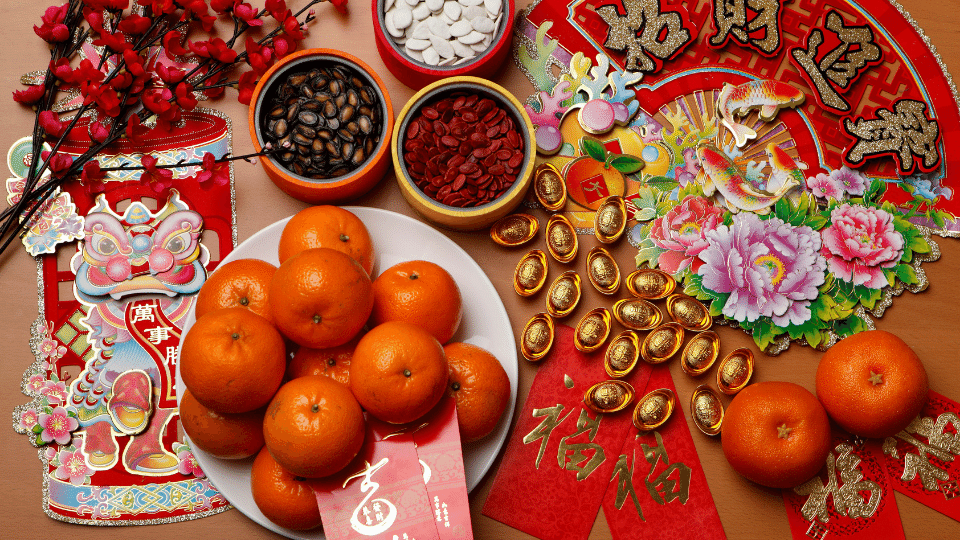The second holiday for this year is coming up, and everybody is hoping that the Year of the Tiger will bring us much luck and a better life!
Chinese New Year is celebrated in the Philippines as a special non-working holiday which gives the opportunity to both Chinese-Filipinos and Filipinos in the country to enjoy the celebration. This became possible because of the Proclamation declared by President Benigno S. Aquino III, stating that this "is a manifestation of our solidarity with our Chinese-Filipino brethren who have been part of our lives in many respects as a country and as a people."
The Chinese culture in the Philippines had been recognized to be very influential in the country, as Filipinos are known to partake in the celebration by means of having Chinese Food, consulting Feng Shui experts for good luck, as well as reading their Chinese horoscope.
But, with the pandemic still on and a new COVID-19 variant already entered the country, you might be wondering how you could celebrate the Chinese New Year safely and soundly at home. Well, here are some of the ways to still get lucky while staying healthy on Chinese New Year this February 1.
Chinese New Year is celebrated for sixteen days (from Chinese New Year's Eve to the Lantern Festival). The preparations start half a month before Chinese New Year's Eve. Many celebration activities for this period are traditional customs, but some are quite new.
Pre-Chinese New Year Preparations (Jan. 10–30, 2022)
Jan. 10, 2022: Laba Festival in your home sweet home
Some Chinese start to celebrate and prepare for Chinese New Year as early as day 8 of the 12th month of the lunar calendar. Whether the family is on the mainland or in a condo living set up here in the metro this festival cannot be missed. It is called Laba ( 腊八 Làbā /laa-baa/ '12th lunar month' + '8'), in the traditional sense, which marks the beginning of the Spring Festival. In 2022, it corresponds to January 10.
The main activity on this day is to pray to ancestors and gods (such as door gods) for fortune and a successful harvest. The main food include the Laba porridge (腊八粥 / Làbā zhōu), Laba tofu (腊八豆腐 / àbā dòufu), and noodles (腊八面 / Làbā miàn) which any Nǎinai or any great Auntie can do in your household
Jan. 26, 2022: House-Cleaning
Beginning on the 24th day of the 12th lunar month Chinese people carry out a thorough ‘winter-cleaning’ of their houses.
This is called "sweeping away the dust", and represents a wish to put away old things, bid farewell to the old year, and welcome in the New Year. Let Fresh Air In. Let good luck for the year ahead to come in by opening your windows to welcome in a blast of fresh air! Also, tradition says that families should open their front doors at the stroke of midnight on New Year's Eve; this will make the previous year's spirits and energy escape and make room for everything to come.
Chinese New Year's Eve (Jan. 31, 2022): 6 Traditions and Activities
Hang Door Gods pictures
Known as mén shén and dating back to the Tang Dynasty, the Door Gods are the guardians of an entrance and were some of the most popular gods for ancient Chinese people. They come in pairs, always facing each other, and are thought to protect homes from evil spirits. During Chinese New Year, people add pictures of the gods to their doors to bring good fortune to the household and to protect the family in the coming year.
Hand Out Red Envelopes
As the Chinese call it, red envelopes or hongbao symbolize good wishes and luck for the incoming year. They believe that giving crisp bills to their loved ones, especially those with many eight on its serial number, will bring good luck and prosperity. Just avoid the ones that include the number four as they believe it means death.
This particular tradition will give the recipient excitement and happiness and a favorable and fortuitous condition to the benefactor. Spread good luck and wishes to your loved ones by handing out red envelopes as much as you can!
Brighten up with some color
It’s easy to see when the Lunar New Year is around the corner – festive scarlet deçor adorns every street, storefront, and home. Being associated with wealth and good fortune, red decorations are hung to ward off Nian – a lion-like monster that is afraid of the color red, according to LNY mythology.
In parts of China, where the holiday is called Spring Festival, bright floral arrangements and fruit trees also brighten homes and streets – peach and apricot blossoms hold special significance for the celebration of Tết in Vietnam. In Korea, birds join these decorations – decorative cranes symbolize longevity while magpies represent good fortune.
Offering Sacrifices to Ancestors
Offering sacrifices to ancestors shows respect and piety. In addition, ancestral spirits are believed to protect their descendants and help them become prosperous.
Many worships on Chinese New Year's Eve, before the reunion dinner, to show that they are letting their ancestors "eat" first. Offerings of meat, wine, joss sticks, and joss paper are placed in front of the shrine/grave.
Enjoying a Reunion Dinner
The New Year's Eve reunion dinner is a "must-do" dinner with all family members reuniting. Chinese try very hard to make this a family event, often traveling long distances. This is the main reason for the huge travel stress throughout China.
Big families including several generations sit at round tables and enjoy the food and time together.
Staying Up Late
This custom is called shousui (守岁/show-sway/‘to keep watch over the year’). In the past, Chinese people used to stay up all night, but now most stay up only until midnight firecrackers and fireworks die down.
Chinese New Year's Day (Feb. 1, 2022)
Setting Off Firecrackers and Fireworks and Watching Lion and Dragon Dances online or another medium
The moment New Year arrives there is a cacophony of fireworks and firecrackers all around, even in rural China. Families stay up for this joyful moment. Here in the Philippines, you can still have the loudest noise by having the dragon dance accompanied by drums.
Putting on New Clothes and Extending New Year Greetings
On the first day of New Year, Chinese people put on new clothes and say "gong xi" (恭喜/gong-sshee/literally ‘respectful joy’, meaning 'greetings' or 'best wishes'), wishing each other good luck and happiness in the New Year.
It is customary for the younger generation to visit their elders, and wish them health and longevity. See The Popular Chinese New Year Greetings and Wishes.
If you are thinking of moving into a new condominium, check out Vista Residences!
Vista Residences is the condominium arm of the country’s largest homebuilder, Vista Land & Lifescapes, Inc. that offers ready for occupancy and pre-selling condominium projects in Manila, Makati, Mandaluyong, Quezon City, Ortigas, Baguio, Cebu, and CDO that are strategically located within major cities, in close proximity to premium universities, transit-oriented locations, and developed business districts.
At Vista Residences, unit owners can take advantage of the property’s centrality. The properties of Vista Residences are strategically located near the country’s premium universities and CBDs, making them an attractive investment for both local and foreign investors.
Living in Vista Residences enables you to enjoy convenience, where everything is pretty much within walking distance or a few minutes away from the property; comfort because the project features and amenities are designed to deliver comfort at all times, which makes condo living a worthy investment; security that is 24/7 and CCTV monitoring, which makes the residents safe and secure within the property.
In line with Vista Residences’ thrust to offer convenience among its residents, it also features an AllDay Convenience Store and Coffee Project in all its projects.
For more information on Vista Residences, email [email protected], follow @VistaResidencesOfficial on Facebook, Twitter, Instagram, and YouTube, or call the Marketing Office at 0999 886 4262 / 0917 582 5167.










